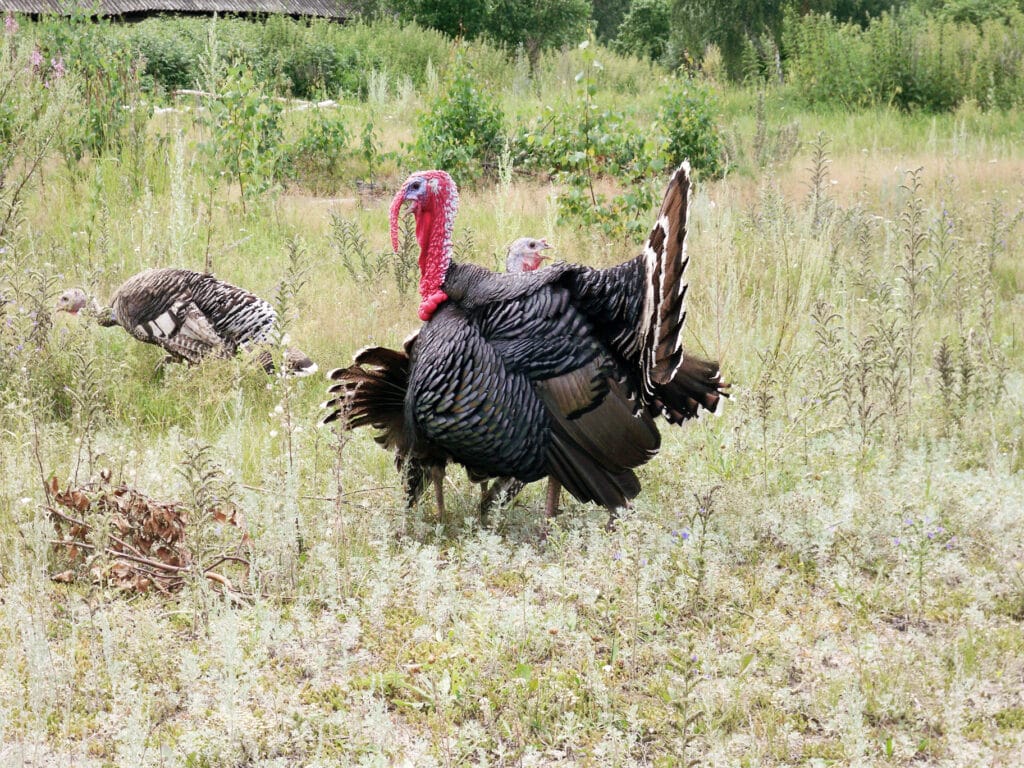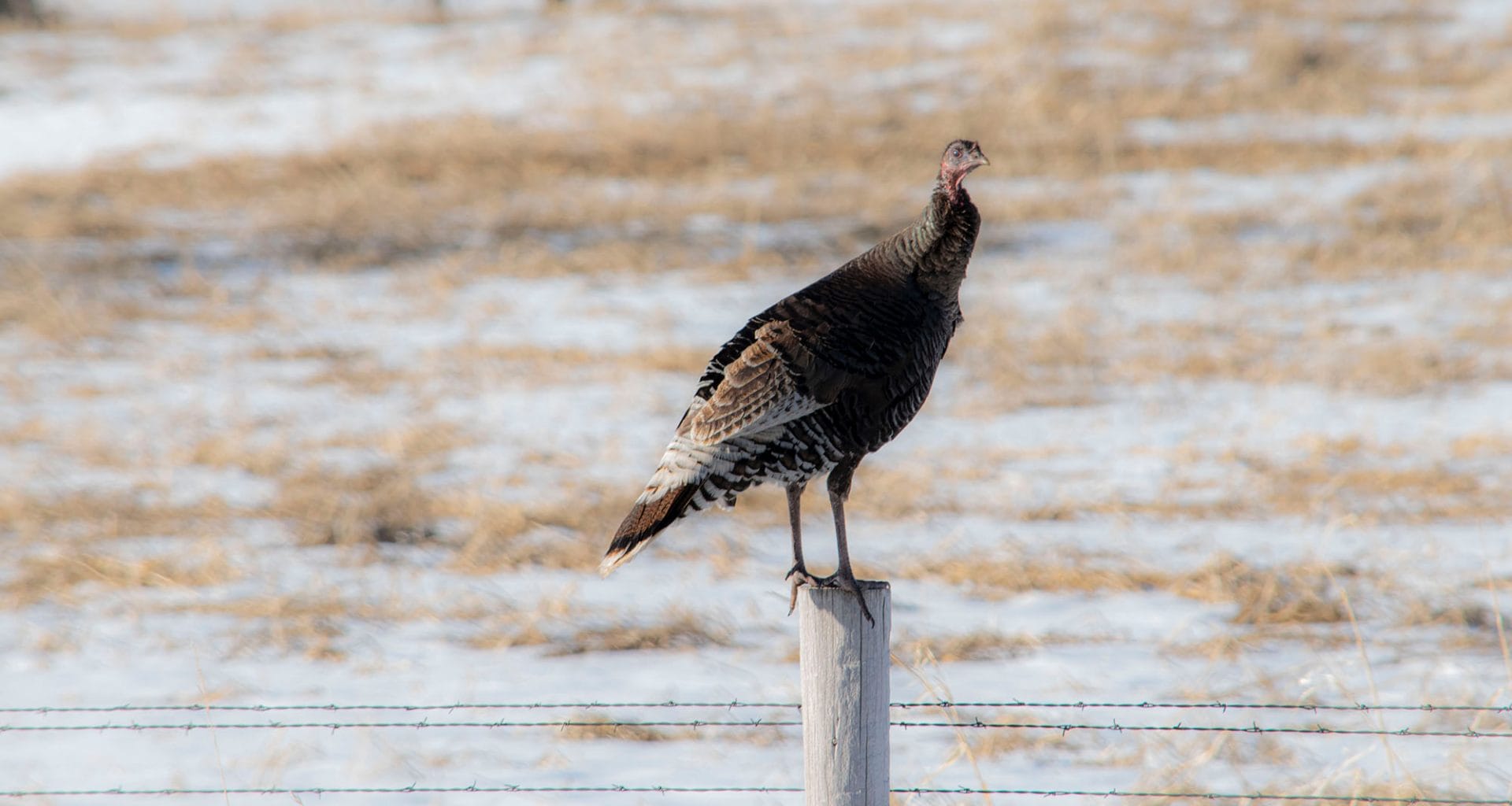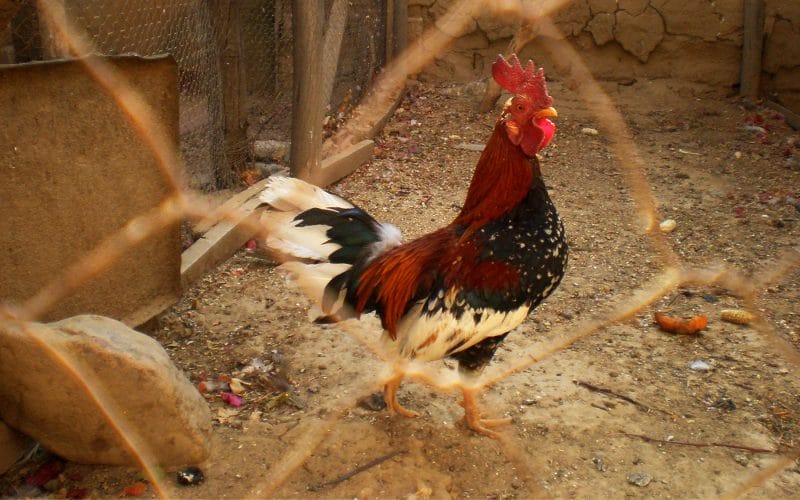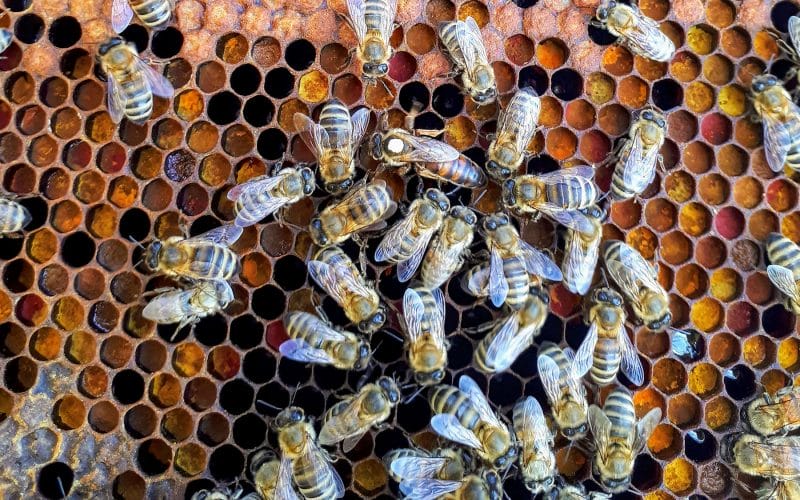The wild turkey population is growing, and it is becoming commonplace to see these wild turkeys on roadsides or in fields. Some flocks have grown large and hold no less than 50 birds. It may be a common mistake to make if you think hunting wild turkeys are easy. Especially after you’ve seen the large flocks on the side of the road. So can you eat wild turkey?
Yes, it is possible to eat wild turkey. After all, all turkeys were once wild. Wild animals usually have tougher meat, and it takes much more effort to prepare and cook wild meat. Wild turkey meat is often dry, and so many people do not enjoy it. However, there are specific ways to prepare and cook wild turkey to ensure as much moisture as possible is retained.
Author Note: Why is the meat so much drier? Wild turkey meat is leaner than the domesticated heritage turkey meat, as much as 50% leaner. This is good news for the waistband but also means the meat will be drier.
Turkeys that you buy from the store are often filled with saltwater. This saltwater helps to soften the meat, which is why an au natural turkey will be both tougher and drier and the turkey you can pick up from the store.
Why Does It Taste Dry?

All wild game meat will be drier than the domesticated version. This is why it is essential to prepare and care for the wild game. If you are hunting your dinner, then you should field dress the animal as soon as possible if you want a tasty dinner. Even if you plan to have the whole bird cooked, much like the traditional thanksgiving turkey popped in the oven, you will have to take the entrails out.
The thing is, many people think that wild turkeys cannot be eaten. While this is incorrect, it is understandable because the meat itself is quite different.
How to Field Dress a Wild Turkey
- Cut along the bottom of the breast to the anus
- Remove the organs
- If you plan on eating any, place them in a plastic bag for later
- Find the anus, which is between the pelvic bones. Cut the anus out
- Locate the fatty tissue on the top of the breast. This is known as the breast song. Remove this fatty tissue
- Remove the crop
- Remove the skin over the breast only if you are not cooking the bird whole
How Do You Make Wild Turkey Taste Good?
Some more field dressing tips:
You’ll need to decide how you are going to cook the turkey first. If you deep-fry, smoke, or roast turkey as a whole bird, you should pluck the feathers out and keep the skin whole over the bird. The skin will help to add a tasty flavor and help to lock in moisture.
If you find plucking a bore and a chore, just remember that it is worth the effort. Use these tips when plucking the bird:
Get a few feathers in your hand and pull them upwards towards the head. Don’t put too many feathers in your hand, or else you risk ripping the skin.
If you aren’t going to cook the bird whole, then you’ll want to skin it and debone it. These steps are far more manageable than plucking the feathers. Save the meaty pieces you want to cook, i.e., the wings, legs, breasts, and thighs.
If you’re short on space in your freezer, then you’ll find that a deboned turkey will be much easier to keep in the cold freezer.
Always soak your turkey in salt water, whether you’re frying or smoking the meat, as this will help to keep the meat moist.
Is Wild Turkey Good Eating?

You can eat almost every part of a wild turkey. The breast meat is the most tender part of the bird, but if you’re looking for flavor, then you should opt for the thighs or legs. If you enjoy giblets, then you might want to save the liver, heart, and gizzards. Fry the gizzards in the same way that you would prepare chicken livers.
Using spices and herbs will enhance a wild turkeys flavor. Black pepper, white wine, rosemary, or even lemon juice are all excellent additions to a wild turkey recipe.
Author Note: One of the best parts of preparing a wild turkey is that there are no preservatives, genetic adjustments, or added growth hormones. This means that your wild turkey feast could be healthier than a store-bought turkey.
Have you got a wild turkey on your hands? Take a look at this recipe.
Recipe for Wild Turkey
- Prepare the bird by plucking the feathers and cleaning out the cavity. Keep the organs in a plastic bag if there are any you would like to eat. Find the joint where the breast and wing meat. Cut off the wings from here. Cut the neck as well as the legs by the knee.
- Begin the cooking process by scalding the bird in a large pot of heated water. Aim for the water to be at about 145 degrees and scald the bird for approximately 45 seconds. This will help the pin feathers lose. Remove any remaining feathers.
- Now, you need to remove the filoplumes, also known as the hair feathers. To do this, you’ll need a lighter. A blowtorch will be better to use if you have one.
- Rub plenty of butter or olive oil and any herbs and spices inside the cavity and on the skin. The best herbs are a blend of thyme, parsley, and some sprigs of fresh rosemary. To top it off, sprinkle it with a pinch of salt and pepper.
- Top Tip: wrap the legs in bacon if you want an extra touch of flavor.
Additional Instructions
- Now is the time to stuff the turkey if you are going to use stuffing
- Once you have stuffed the turkey and finished preparing the skin with olive oil and herbs, it’s time to sew. It would be best if you sewed any places that were ripped during the feather plucking. First, tie the legs together. Next, pull the legs back into the body before sewing the cavity closed.
- If you want to avoid toughening up the meat even further, then you should avoid covering the turkey completely as it cooks. Instead, place the turkey with the breast side facing downwards. By doing this, the turkey can self-baste. If the turkey is covered completely, then the meat will steam, and it will be even tougher.
- Preheat the oven to 325 degrees. Once the oven is ready, place the turkey in the oven for one hour. But be sure to baste the turkey every 20 minutes with the remaining liquid in the pan.
- After one hour, flip the turkey and use a probe thermometer to gauge the breast’s temperature and legs.
- If you’re pressed for time, then separate the legs from the cavity and let them roast in the pan next to the bird.
- Allow the bird to continue cooking in the oven once you have flipped it over. You’ll know when it is ready by using a good quality temperature probe to read the temperature. The turkey is ready once the internal temperature reads 165 degrees.
- Once the turkey is ready, cover it with foil and let it rest before carving. The cooked turkey should wait for at least 30 minutes before you carve it.
How Do Domestic Turkeys Differ from Wild Turkeys?

Coloring is one feature that is quite different. Domestic turkeys tend to be almost white in color. But not all turkeys are white. Wild turkeys are typically more vivid in coloration, except for the odd albino turkey found in the wild. Wild turkeys are typically black in color, and the males will have brightly colored fans and heads.
The tips of the feathers are also typically brightly colored. Coloring in nature is never an accident. A wild turkey’s coloring helps it to blend into natural environments such as forested habitats. This coloration is also particularly helpful in disguising the bird from nocturnal predators.
Author Note: Many people believe that a turkey has poor eyesight. This is primarily due to the shape of a wild turkey’s head. However, wild turkeys have excellent eyesight. In fact, wild turkeys have some of the keenest eyesight in the bird kingdom.
And in a kingdom that encompasses raptors like eagles and owls, that is quite an impressive claim. Wild turkeys can spot even the smallest of movements. Turkeys can identify sounds with a keen sense as well. They can identify calls to the opposite sex, comfort, anger, and other alerts.
How Does Wild Turkey Taste?
Wild turkey will have a similar flavor to its diet. A wild turkey’s diet will fluctuate according to what it eats. Some wild turkeys will forage off of farmers’ crops, much to the farmer’s dismay.
These crops will include beans, corn, and seeds. Wild turkeys will often feast off of wild seed as well. Although a wild turkey’s meat will be similar to domestic “dark meat,” the taste is still delicious. The main complaint is generally geared towards the meat’s toughness, but you can adjust this with good preparation.
Conclusion
Wild turkeys can be an excellent feature of the Thanksgiving table. Follow our instructions for preparation, and you will be well on your way to preparing a chemical-free, “free-range” meal.
We hope you enjoyed this article on can you eat wild turkey.
Fly high friends!










